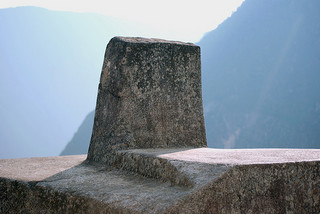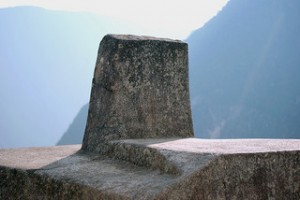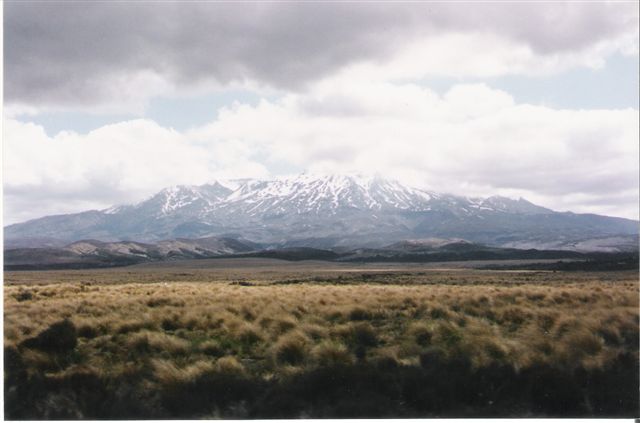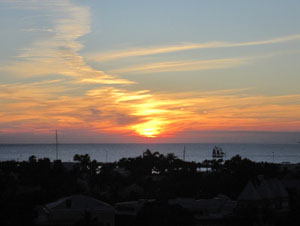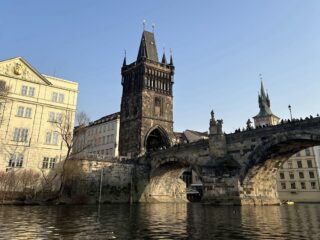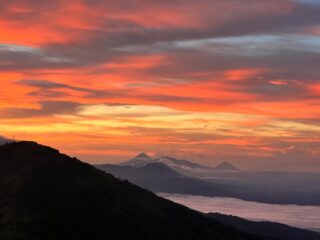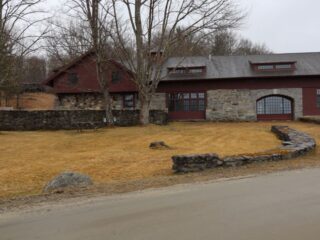By Paul Millward
Now almost delirious with altitude sickness, I found myself literally standing on top of the world. I looked below to a green plateau, perfectly positioned by nature across a mountain ridge which straddled two enormous ravines on either side. Beyond this stretched endless acres of verdant sub-tropical rainforest covering the contours of vast mountains wreathed in wisps of ethereal mist.
I was looking down on one of the most remarkable historic sites in the world, Machu Picchu, the so called lost city of the Incas, located above the Urabamba Valley, high up in the Andean mountains of Peru. Built in the 15th century, Machu Picchu rises 7,970 feet above sea level—I could feel every inch of literal and figurative monumental height. The altitude induced in me the feeling of being stoned; every movement I made felt like walking on the moon. I was high in every sense of the word.
But nothing could detract from the grandeur of this place and I continued looking down at the plateau where the ruins of the mysterious Inca city lay, unable to comprehend how such a remote and inaccessible place could once have been a civilised community full of people. And that, just beyond the ancient citadel, the huge peak of Huayna Picchu still looms like an omnipresent god.
How amazing it must have been to be the first westerner to come upon this place, I thought, and my mind turned to the man credited with bringing Machu Picchu to the attention of the world–the American explorer Hiram Bingham. It was one hundred and one years ago, on the 24th of July, 1911, that Bingham first re-discovered Machu Picchu and became seduced by its strange charm. Bingham is an irresistibly romantic figure, rumoured to have been the basis for Steven Spielberg’s legendary movie hero Indiana Jones. While this has never been confirmed, Hiram Bingham was clearly an archaeological adventurer very much in the same mould as Jones.
Like his film screen counterpart, Bingham was both an academic (he taught history and politics at Harvard) and a fearless explorer with a penchant for trekking across risky and inaccessible regions of unknown wilderness, rich in exotic archaeological bounty. Bingham wrote about Machu Picchu in his book Inca Land: Explorations in the Highlands of Peru which was published in 1927. But it was his later book, Lost City of the Incas, that really captured the public’s imagination, turning into a bestseller when it was published in 1948. The book is a thrilling adventure story, describing Bingham’s dangerous journey through uncharted territory and his perilous climb up to Machu Picchu.
But this was not the first trip Bingham had undertaken to this exciting new continent. He had made two previous expeditions to South America and published books on each one prior to his return to Peru in 1911.
In Lost City of the Incas Bingham tells the story of how he inadvertently found out about the existence of Machu Picchu while he was journeying through the Urabamba Valley searching for the Inca city of Vilcabamba.
While camping on the river banks at Mandas Pampa, a local farmer told Bingham about the remains of an old city at the top of a mountain ridge not far away, which he called Machu Picchu or “old mountain.” The book goes on to describe how Bingham risked his life to reach the summit of the ridge where the lost city remains, and how the explorer, accompanied only by a guide and the farmer, crawled across a dangerous bridge on his hands and knees, only to be faced with a sheer slope that had to be scaled with extreme caution. Bingham eloquently describes the stunning new world he now found himself in:
In the variety of its charms and the power of its spell, I know of no place in the world which can compare with it. Not only has it great snow peaks looming above the clouds more than two miles overhead, gigantic precipices of many- coloured granite rising sheer for thousands of feet above the foaming, glistening roaring rapids; it has also, in striking contrast, orchids and tree ferns, the delectable beauty of luxurious vegetation, and the mysterious witchery of the jungle.
Having won the struggle to climb the ridge he was led by a guide to the Inca ruins. Today the remains of the buildings are clearly visible, but when Bingham first saw the site it was obscured by a forest of trees, vines and vegetation. The guide led him down past the old terraces which had remained intact, to a group of magnificent white granite walls. Here Bingham found the remains of what he would subsequently identify as the Royal Tomb, the main Temple and the Temple of the Three Windows. Bingham describes the wonder of first discovering these enigmatic constructions:
Suddenly I found myself confronted with the walls of ruined houses built of the finest quality of Inca stone work. It was hard to see them for they were partly covered with trees and moss, the growth of centuries, but in the dense shadow, hiding in bamboo thickets and tangled vines, appeared here and there walls of white granite ashlars carefully cut and exquisitely fitted together… . Dimly I began to realize that this wall and its adjoining semicircular temple over the cave were as fine as the finest stonework in the world. It fairly took my breath away. What could this place be?
Bingham went on to carry out a serious scientific study of the site, excavating and removing a staggering 40,000 artefacts. His enthusiasm and dedication proved ground-breaking, pioneering the execution of serious archaeological digs in South America. Lost City of the Incas goes on to record the site in great detail, giving the world a unique insight into Inca life. These later chapters of the book, with their meticulously detailed listings of his findings, make dry reading compared to the exciting adventure of the earlier chapters, but they provide an invaluable scientific survey.
Following the footsteps of Bingham, I walked down past the terraces to explore the ruins in further detail. And entered one of the most impressive parts of the city, the area Bingham named the Sacred Plaza. This section is made up of huge rock lintels which weigh up to three tons. The east wall is spectacular, being built on a single massive rock containing a series of trapezoidal shaped windows. From here I was overwhelmed by incredible views over miles of mountains where Andean Condors glided on imperial wings and misty clouds mingled with lush green forests. Bingham believed that the three windows here, portals to the vast mountain ranges beyond, represented the three mythological caves from which the Ayar Brothers, the children of the sun, had walked into the world.
I walked through the space known as the Sacristy, the place where it is believed the priests went to prepare themselves for their scared rites. This area is full of beautiful masonry and it seemed miraculous to me that the Incas were able to create buildings of such perfection without the aid of technology or mathematics as we know it. The precision with which the stone has been carved and placed together to produce such enduring constructions is quite astonishing.
From the Sacristy I climbed upwards into the open to a location which seemed to be the main focal point of the city. Here I walked onto a small promontory, the highest point of the ruins, where a large block of rock provided a kind of plinth for the rectangular shaped block of stone which stood at its centre. This mysterious and intriguing object resonated with spiritual significance. It is known today as the Intihuatana, or the “Hitching Post of the Sun,” and is believed to have been used as some kind of solar clock to plan for the changing seasons and the Inca’s religious ceremonies. But no one knows for sure precisely what it is, which only adds to its peculiar fascination.
Standing there at that moment, it was difficult not to feel captivated by the myth of the Incas, the children of the sun. I thought about the legend of Manco Capac and imagined him spectacularly arising from the waters of Lake Titicaca with golden staff in hand, proclaiming a new vision for the world. Sent into this world by the sun god Intl to civilize mankind, Manco Capac and his wife Mama Ocllo were the original children of the sun from whom all Incas are descended.
Having reached this elevated spot amongst the mountains myself, with the sun blazing down upon my back, it was easy to understand how these high altitude dwellers came to equate the concept of God with the sun; it is perhaps the most obvious thing in nature with which to personify the Creator. The mighty sun: the great shining orb of the skies, the source of all life, upon whose willingness to pour out its rays our welfare depends.
It seems that Hiram Bingham too was captivated by the notion that Machu Picchu was a great shrine to the sun. He became convinced that the city was a sanctuary for the “Virgins of the Sun”. These were especially chosen young women, groomed to serve the Inca Aristocracy and their sun god. Bingham writes in Lost City of the Incas, “It was natural that the most desirable girls should be set aside for the worship of the sun, whom the Incas regarded as a benevolent and life-giving god.”
I could see the attraction of imagining Machu Picchu as a city full of beautiful young girls nobly devoting their lives to their god, but recent research suggests that Bingham was wrong. New evidence has led to the slightly more prosaic theory that Mach Picchu was most likely built for the Inca emperor Pachacuti.
There is still much surrounding Machu Picchu which remains shrouded in mystery. The Spanish Conquistadors who so comprehensively rampaged their way across the Inca Empire and spent centuries ruling the region never even found the city. The only logical explanation for this oversight seems to be that the city was abandoned before the Spanish invasion of South America.
Looking around Machu Picchu, I realised that this sense of mystery still pervades the site. It is part of its appeal and why it conquered my imagination so effectively. I turned once more to look at Huayna Picchu, the huge mountain that looms over the ruins. It was hypnotic; I just could not take my eyes away from it. No matter where I walked on Machu Picchu, my gaze was drawn back to that towering peak, cloaked in sun and clouds, to contemplate the compelling beauty and mysterious magnetism of this extraordinary place.
Experts believe the Incas specifically chose Machu Picchu to build their city because they considered the location to be sacred, that the position of Machu Picchu in relation to the surrounding landscape was in alignment with certain astronomical phenomena which held some great significance for them. Exactly what it could be is unknown, but there is no denying that this place is charged with the mystical power of nature. And for me it seemed to be inextricably linked to Picchu Huayna. There was something about its shape and its position which made it irresistible.
Equally difficult to resist was the sensation of feeling nearer to heaven here. I felt closer to the sun, closer to the source of life, closer to the light, closer to God. I felt convinced that this must have been the setting for some remarkable and profound ritual.
But what was it that had caused the Inca’s to so ruthlessly abandon their sacred site? Surely only the most severe catastrophe could have led them to leave this precious place? Why else would they have left? Then again, why would anyone leave this mesmerising place? It could have held me under its spell for an eternity.

